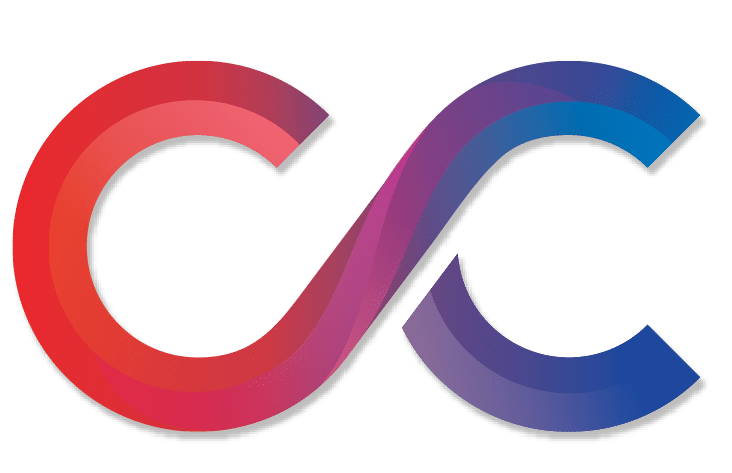Before understanding the types of technical SEO, knowing what is SEO and its relevance is essential. In today’s digital landscape, having a strong online presence is crucial for businesses to thrive. Search engine optimization (SEO) plays a pivotal role in Digital Marketing by helping websites rank higher on search engine result pages, drive organic traffic, and increase visibility. However, SEO is not a one-size-fits-all approach.

In this blog, we will delve into the world of SEO and explore the different types of technical SEO and their strategies that can propel your website to success. From technical SEO to local SEO, on-page, and off-page optimization, franchise SEO, Shopify SEO, Amazon SEO, content writing, and conversion rate optimization (CRO), we will uncover each type’s unique benefits and techniques. Get ready to unlock the potential of SEO and understand the types of technical SEO to elevate your online presence to new heights.
What is SEO?
SEO stands for Search Engine Optimization. SEO is the practice of optimizing a website or content to improve its visibility and ranking in search engine results pages (SERPs).

SEO involves various techniques and strategies, both on-page and off-page, to increase organic (non-paid) traffic to a website. SEO aims to improve the website’s relevance and authority, thereby improving its chances of appearing higher in search results when users search for relevant keywords or phrases.
SEO encompasses keyword research, website optimization, content creation, link building, and technical optimization for various types of technical SEOs to improve the website’s visibility, drive targeted traffic, and ultimately enhance its online presence.
How many Types of SEO services are provided by agencies?
- On-Page SEO: SEO optimizes web pages to improve their visibility and ranking in search engine results. This includes optimizing page titles, meta descriptions, headings, content quality, keyword usage, URL structure, internal linking, and user experience factors such as page load speed and mobile-friendliness.
- Off-Page SEO: Off-page SEO refers to activities outside the website to improve its visibility and authority. This primarily involves building high-quality backlinks from reputable and relevant websites and social media promotion, influencer marketing, and online reputation management. The on-page and off-page SEO are the two types of SEO in digital marketing that form the foundation of any content to get the relevant audience and rank higher on Google.
- Technical SEO: Technical SEO involves optimizing a website’s technical aspects to improve its search engine visibility and crawling efficiency. This includes optimizing website structure, ensuring proper indexing, fixing broken links, improving site speed, implementing schema markup, and ensuring mobile-friendliness.
- Local SEO – According to statistics, 64% of customers search for local businesses online. Enhancing your company’s local SEO rankings through Google Business Profile or My Business (GMB) optimization can help you attract highly intended customers. We can assist in optimizing your GMB profile and handling your online reputation to increase your local following.
- Franchise SEO – CrimsonCobalt Digital offers SEO services to supercharge franchise marketing efforts for multi-location businesses. Our strategies include publishing geo-specific content, utilizing Nextdoor advertising, and developing custom web designs. With our SEO services, we can maximize your brand’s impact and drive leads and sales. Let us be your go-to SEO firm for franchise marketing success.
- Shopify SEO – Expand your online store’s market reach and strengthen your digital presence with CrimsonCobalt’s expert SEO services. Our team provides 24/7 customer support to address your urgent needs and concerns. We also offer a range of services, including Shopify SEO audit, Shopify web design, paid advertising, and review response publishing, designed to optimize your customers’ Shopify experience. Let us help you take your online store to the next level.
- Conversion Rate Optimization (CRO) – CrimsonCobalt Digital’s CRO services can help you increase your customers’ lifetime value and boost your online revenue. Our SEO company combines pay-per-click marketing with our SEO services to optimize your conversion potential. Furthermore, we conduct thorough website analyses, optimize landing pages, and conduct A/B split testing to enhance your online performance. Enquire now!
- Amazon SEO – Make your brand noticed by millions of customers ready to purchase on Amazon with our expert services. Our team can optimize your Amazon product listings, maximize ad placements, and implement goal-oriented Amazon Marketing Services (AMS) SEO solutions to promote your products to the right customers. With our help, you can differentiate your brand and stand out. Let us help you increase your sales on Amazon.
- Content Writing – CrimsonCobalt Digital has a team of proficient writers who specialize in crafting SEO-friendly content for your website. They can create captivating, shareable blog posts or optimize your existing service and product pages by adding more relevant content. By regularly adding fresh content to your website, search engines will favor it. Irrespective of the types of technical SEO you choose for your business, the content part is the most important to keep the user engaged. Hence, partnering with our SEO firm can help you fulfill your content needs and enhance your search marketing. For more updates, follow our Linkedin Profile.
Although these are the services provided by most of the agencies, the initial 4 types of SEO are the pillar of any SEO agency as it predominantly emphasizes content, internal and backlinking aspects, which are the significant contributors towards a better ranking on Google.
What is Technical SEO?
Technical SEO is the optimization of the technical parameters of a website to improve its search engine visibility and crawling efficiency. It involves implementing various technical optimizations to ensure search engines can effectively crawl, index, and understand the website’s content. Let us now look into the types of technical SEO.

Types of Technical SEO
Types of technical SEO refer to the different aspects and techniques involved in optimizing the technical components of a website to improve its search engine visibility and performance. The types of technical SEO focus on enhancing a website’s underlying infrastructure, code, and technical aspects to ensure that search engines can effectively crawl, index, and understand its content.
Website Speed Optimization:
Enhancing your website’s loading speed and performance to serve a better user experience and improve search engine rankings. For greater results in Website Speed Optimization, it is essential to understand the types of technical SEOs given, as each requires different optimization strategies.
Mobile Optimization:
Improving your website for mobile devices, ensuring it is responsive and easily accessible to mobile users.
Site Structure and Navigation:
Optimize your website’s structure and navigation to make it accessible and search engine-friendly, including proper URL structure, breadcrumbs, and internal linking.
Indexing and Crawling:
Ensuring search engines can effectively crawl and index your website’s pages, including XML sitemaps, robots.txt optimization, and duplicate content handling.
On-Page SEO:
Enhancing individual web pages to improve their visibility in search engine results, including meta tags, header tags, keyword optimization, and content organization.
Technical Site Audit:
Conduct a comprehensive audit of your website to identify and resolve technical issues that may impact search engine visibility, such as broken links, redirects, and canonicalization.
Schema Markup:
Implementing structured data markup to provide additional context and information to search engines, helping them understand your content better and potentially display rich snippets in search results.
SSL and Website Security:
Implementing HTTPS and ensuring your website is secure with proper SSL certificates will enhance user trust and potentially boost search engine rankings.
Website Accessibility:
Optimize your website to ensure it is accessible to users with disabilities, following accessibility guidelines and standards.
International SEO:
Optimizing your website for international audiences, including language targeting, hreflang tags, and geotargeting strategies.
These are the predominant types of technical SEO and strategies that can be employed to improve your website’s visibility, performance, and user experience in search engine results. Types of technical SEO play a crucial role in enhancing a website’s visibility and performance in search engine rankings. By implementing these technical SEO strategies, websites can improve their visibility, user experience, and search engine rankings, leading to increased organic traffic and online success.
How to Choose the Right Technical SEO for your business?
Here are some critical aspects of technical SEO:
After going through the types of technical SEO, let us now understand some critical aspects of technical SEO that need to be considered to optimize your page or content effectively.
- Website Speed: Optimizing website speed is crucial for providing a positive user experience and improving search engine rankings. It includes minimizing file sizes, leveraging browser caching, optimizing images, and using content delivery networks (CDNs) to reduce load times.
- Mobile-Friendliness: With the increasing usage of mobile devices, having a mobile-friendly website is essential. Mobile-responsive design ensures the website adapts and displays correctly on different screen sizes, improving user experience and search engine rankings.
- URL Structure: Having clean and descriptive URLs helps search engines comprehend the content of a web page. Optimized URLs should be concise, include relevant keywords, and avoid unnecessary parameters or numbers.
- Site Architecture and Navigation: A well-structured site architecture and intuitive navigation make it easier for search engines to crawl and index the website. It includes organizing content into logical categories, using internal linking to establish a hierarchy, and implementing breadcrumb navigation.
- XML Sitemap: It is a file that mentions all the pages on a website, helping search engines discover and index content more efficiently. It should be regularly updated and submitted to search engines to ensure all relevant pages are indexed.
- Canonicalization: Canonicalization involves specifying the preferred version of a web page when multiple versions are available (e.g., HTTP vs. HTTPS, www vs. non-www). This helps prevent duplicate content issues and consolidates ranking signals to the preferred version.
- Schema Markup: Schema markup is a structured data format that provides additional context to search engines about the content on a web page. It helps search engines comprehend the meaning and relationship of different elements, enhancing search engine listings and potentially rich snippets.
- Robots.txt and Meta Robots Tags control how search engine bot programs crawl and index a particular website. The robots.txt file instructs search engines which pages to crawl or avoid, while meta robot tags can be used on individual pages to specify indexing and crawling instructions.
But it is important to note that before implementing these practices, the types of technical SEO need to be chosen for your business. By implementing these technical SEO best practices, businesses can ensure that their website is correctly optimized for search engines, leading to improved visibility, higher rankings, and increased organic traffic.
How to do Technical SEO?
After going through the types of technical SEO and their critical aspects, let us discuss the process of technical SEO. The procedure for conducting technical SEO involves several steps to validate that your website is optimized for search engines.

Here is a generic outline of the process:
- Website Audit: Start by conducting a comprehensive audit of your website to diagnose any technical issues that may impact search engine visibility and user experience. This includes checking for broken links, crawl errors, duplicate content, and indexing problems.
- Website Structure and Navigation: Evaluate your website’s structure and navigation to ensure it is logical, organized, and user-friendly. Implement clear and intuitive menus, breadcrumbs, and internal linking to help search engines comprehend the hierarchy and relationships between pages.
- URL Optimization: Review your URLs and ensure they are clean, descriptive, and contain relevant keywords. Remove any unnecessary parameters or session IDs that can create duplicate content issues.
- XML Sitemap: Create an XML sitemap with all the pages on your website and submit it to search engines. This helps search engines find and index your content more efficiently.
- Robots.txt: Check your robots.txt file to ensure it is appropriately configured to allow search engines to crawl and index relevant pages while blocking access to sensitive or irrelevant content.
- Page Speed Optimization: Optimize your website’s page speed by compressing images, minimizing code and scripts, leveraging browser caching, and using content delivery networks (CDNs). Fast-loading pages improve user experience and search engine rankings.
- Mobile-Friendliness: Ensure your website is mobile-friendly and responsive, adapting to different screen sizes and devices. Use responsive design techniques and test your website on various mobile devices to ensure a seamless mobile experience.
- Schema Markup: Implement schema markup to give search engines more context and information about your content. This structured data helps search engines comprehend the content better and can lead to enhanced search results with rich snippets.
- Website Security: Implement HTTPS and SSL certificates to secure your website and gain a ranking boost from search engines. Regularly monitor and address security vulnerabilities to protect your website from hacking and malware.
- Monitoring and Optimization: Continuously monitor your website’s technical performance using tools like Google Search Console and Bing Webmaster Tools. Analyze data, identify issues, and optimize search engine visibility and user experience.
Implementing technical SEO strategies after understanding the types of technical SEO suitable for your business goals is essential for optimizing website performance, improving user experience, and achieving higher search engine rankings.
To conclude, it’s necessary to note that technical SEO is an ongoing process. It requires regular monitoring, analyzing the types of technical SEO for your business, and updates to keep up with search engine algorithm updates and maintain optimal website performance. Understanding the types of technical SEO will help you choose the right category for your business. Thus by following these steps and staying informed about the types of technical SEOs and effective practices, you can ensure that your website is technically optimized for search engines.


